Hussam al-Mahmoud | Hassan Ibrahim | Jana al-Issa
“How can a family with four people wanted for military service, who participated at the beginning of the revolution with demonstrations against the regime, think of returning from Lebanon to Syria?”
Muhammad, 33-year-old, gives his opinion on the “voluntary return” plan that the Lebanese authorities have put in place.
He has lived with his family in Lebanon for eight years, and despite his refusal to return, he does not deny his fear for himself and his family. Some of them have expired residency papers, and extracting them is very expensive, in addition to concern about what the Lebanese authorities might do in this regard.
Muhammad’s concerns are shared by the various Syrians in Lebanon, given that the return plan did not specify a target group alone or a timetable for its implementation, opening the door to doubling the lack of stability among the Syrians in more than one way.
In this file, Enab Baladi discusses the plan for the “voluntary return” of Syrian refugees, which the Lebanese authorities have begun to implement, the legal point of view of it, and the circumstances related to it.
It also discusses, with a group of jurists and specialists, the extent to which the plan can be implemented or not, in accordance with international law, the potential benefit of the Syrian regime, and the economic repercussions of the “return.”
What is the content of the plan?
The Lebanese authorities began implementing the “voluntary return” plan on 26 October, the government initiative that was talked about months ago, which began with the return of 100 Syrian families distributed over three land border crossings with Syria, in Homs and Damascus.
At the time, the official Syrian News Agency (SANA) reported that a batch of Syrian “displaced persons” arrived from the Lebanese camps,
The Lebanese Minister of Social Affairs, Hector Hajjar, described it as a “national day par excellence” for Lebanon, stressing at the same time the continuation of implementing the plan and sending other batches by saying, “Return and nothing but return.”
On the same day, the official website of the Lebanese General Security stated that 511 “displaced persons” returned from Lebanon, 12 of them through the al-Masnaa border center, 12 “displaced people” out of 13 through the al-Aboudia center, and 487 “displaced people” out of 726 through the al-Zamrani crossing.
The General Security stated that this difference in the number of returnees confirms that the return is “voluntary” par excellence.
On 21 October, the Lebanese Minister of the Displaced, Issam Sharaf El-Din, confirmed to the Lebanese al-Jadeed channel that the file of the return of Syrian refugees is in the hands of the Director of Lebanese General Security, Abbas Ibrahim, while he is in charge of helping and providing General Security with lists that include the names of the “displaced” people.
Sharaf El-Din also referred to the necessity of coordination and submitting the names in the form of lists to the Ministry of the Interior and the “national security” of the Syrian regime so that there would be no delay and confusion in the names.
The specter of this plan clearly began to haunt the refugees in Lebanon when it was announced by the Lebanese Minister of the Displaced, on 4 July, during his visit to the Baabda Palace and his meeting with former Lebanese President Michel Aoun.
The plan explicitly provided for the return of 15,000 Syrian refugees from Lebanon per month.
As was announced about two weeks ago, the caretaker Prime Minister, Najib Mikati, called, on 20 June, for the international community to cooperate with Lebanon to return the Syrian refugees, threatening to take a position that “would not be desirable for the West,” which is to work to get them out by what he described as “legal means” by applying Lebanese laws with “firmness.”
On 13 July, the former Lebanese president affirmed his country’s rejection of “what was issued by some countries” regarding a tendency to integrate Syrian refugees into the societies that host them.
On 11 September, the Patriarch of the Maronite Church in Lebanon, Bechara Al-Rahi, warned the Syrians in Lebanon of the dangers of a “second war” they would impose on themselves unless they returned to their country.
Al-Rahi also revealed, during a television interview with the Lebanese al-Jadeed channel, his attempt to convince the Pope in the Vatican of the need to expel the Syrians from Lebanon.
These statements, which created a psychological climate that served as a prelude to the “return” and started it before its implementation, were reaffirmed, on 12 October, by Aoun, announcing the start of the implementation of the process of returning Syrian refugees within days.
Given the time context of the start of the implementation of the “return plan,” it came in the last days before the end of Michel Aoun’s presidential term and after attempts to intensify Aoun’s political activity in his final days in order to leave a positive imprint in his tenure filled with crises.
Last month in Aoun’s mandate, Lebanon completed the maritime border demarcation agreement with Israel, tried to engage in direct negotiations with the Syrian regime for a similar demarcation, and opened the door for the return of Syrian refugees.
Just one day before the implementation began, during a press conference held on 25 October, the Lebanese Director of General Security considered returning the Syrian refugees to their land a “national duty.”
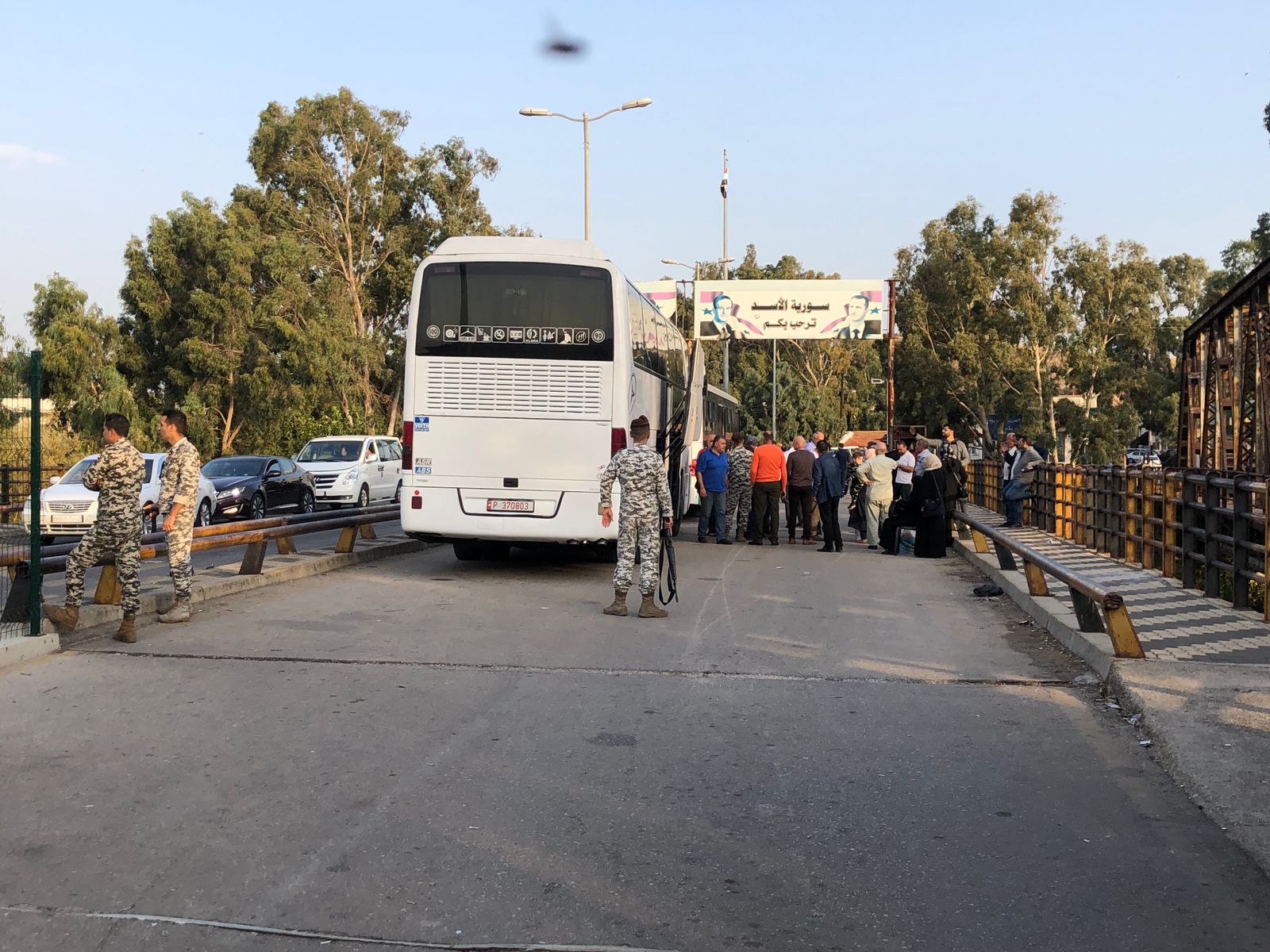
A bus near the Syrian border carrying Syrian refugees who returned from Lebanon to Syria under the so-called “voluntary return” – 26 October 2022 (Annahar)
Warnings of “return”
Over the past years, and repeatedly, international and local human rights organizations have issued statements and reports explaining, with numbers and data, and based on the reality of the country, that Syria is an unsafe country for return.
In light of the talk about “voluntary return” and the escalation of political discourse in this direction, based on an attempt to create popular appeal, the organizations constantly reiterate that the conditions in Syria do not encourage return and are not consistent with the concept of “voluntary return,” in a manner that guarantees human rights, security, and dignity, given the complex security situation in various regions of Syria.
On 6 July, Human Rights Watch (HRW) issued a report describing what Lebanon considers a “voluntary return” as the “forced return” of Syrian refugees in reference to the plan to return 15,000 refugees per month.
HRW also stressed that this step is a violation of Lebanon’s obligations not to forcibly return refugees to countries where they face a clear risk of torture or other forms of persecution.
At the same time, Lebanon is bound by the principle of non-refoulment, according to customary international law, as a party to the Convention against Torture and Cruel, Inhuman or Degrading Punishment, according to the report.
In its turn, Amnesty International links the “unfair” policies of the Lebanese government, in many cases, to the motives for leaving the country, and in these cases, the refugee’s consent to repatriation cannot be considered voluntary.
According to the Amnesty report on 14 October, the Syrian refugees are not in a position to make a free and clear decision regarding their return due to restrictive government policies regarding movement and residence, widespread discrimination, and lack of access to basic services, as well as the lack of objective and up-to-date information on the current human rights situation in Syria.
Bad conditions in both countries
The deteriorating economic and social conditions in Lebanon do not make the refugee stay in it an ideal option, although it is preferable to the refugee at the security level, linked to the fear of persecution, arrest, and torture in Syria.
The incident of the sinking of a boat carrying more than 100 people on 22 September near the Syrian city of Tartus, most of whom were of Syrian, Lebanese and Palestinian nationalities, was a clear example of the similar conditions experienced by Syrians and Lebanese as well, especially since the boat set out from the Lebanese city of Tripoli.
However, the deterioration of the economic reality in Lebanon formed currents that made the refugees bear the consequences of the aggravation of the economic crisis, some of whose factors were not related to the refugees, such as the crisis of the Lebanese banks.
This was followed by the bread crisis that Lebanon witnessed some time ago, which stopped the people in long queues waiting for loaves, which prompted them to demand the adoption of the priority system and the preference of the Lebanese over the Syrians in this context.
Fadel Abdul Ghany, founder and head of the Syrian Network for Human Rights (SNHR), considered the return of Syrian refugees from Lebanon “unsafe and involuntary” because restrictions on them within their areas of residence are a form of “forced return.”
Abdul Ghany told Enab Baladi that the Lebanese authorities had practiced this restriction over the past years through racist statements and government decisions that carried racial discrimination against Syrians and other measures such as obstructing the granting of work permits, which impedes the movement of Syrian families and their involvement in life.
SNHR director also pointed out that these procedures complicate the refugees’ lives to the point that it pushes them to return to their country in a way that does not fall within the framework of “voluntary return,” blaming the Lebanese authorities for the abuse of any of the returnees, especially with the “Syrian Network” documenting hundreds of violations.
Nabil Halabi, lawyer, and the executive director at the Lebanese Institute for Democracy and Human Rights (LIFE), believes that the plan, with its precise description, is not a voluntary return of any refugee.
The Lebanese authorities have systematically persecuted the refugee community under various headings, starting with accusing them of “terrorism” and ending by holding them responsible for Lebanon’s financial crisis, he told Enab Baladi.
“The Lebanese authorities continue to cut off the lifelines of the refugees and blackmail the international community through them, in the hope that they will choose the Syrian hell to escape the Lebanese hell,” he added.
The “persecution” of the Lebanese authorities has prompted many refugees to return after threatening them and turning them into a fragile legal situation, easy to detain, and difficult to lead their daily lives normally, according to the LIFE director.

Syrian refugees with their belongings as they prepare to return to Syria from Wadi Hmayyed, on the outskirts of the Lebanese border town of Arsal – 26 October 2022 (Reuters)
|
The Lebanese authorities continue to cut off the lifelines of the refugees and blackmail the international community through them in the hope that they will choose the Syrian hell to escape the Lebanese hell. Nabil Halabi, lawyer and the executive director at the Lebanese Institute for Democracy and Human Rights (LIFE) |
European point of view, what is the UNHCR’s opinion
European Union spokesperson Luis Miguel Bueno, disclosed to Enab Baladi, in the union’s first comment after the start of the plan’s implementation, that the process of “voluntary return” is being carried out with the knowledge of the United Nations High Commissioner for Refugees (UNHCR), which is the body internationally responsible for following up on this matter.
During a WhatsApp phone call, Bueno focused on the fact that the European position on the return of Syrian refugees has not changed and links the return to appropriate and favorable conditions that preserve human dignity, according to international law, and the assessment of the UN and its affiliated agencies.
According to the EU spokesperson, the European Union still believes that the areas under the regime’s control, and Syria in general, are not safe for the return of refugees.
|
We support the international work and the work of non-governmental organizations and humanitarian organizations in Syria, and any guarantees for the return of refugees are supposed to be international, given that the European Union does not support the Syrian regime’s talk about guarantees related to return. Luis Miguel Bueno, European Union Spokesperson |
“The main player in the issue of return is the United Nations and the UNHCR, and of course, the European Union relies on UN assessments in this regard,” Bueno said.
He added, “We support the UN work and the work of non-governmental organizations and humanitarian organizations in Syria, and any guarantees for the return of refugees are supposed to be international, given that the European Union does not support the Syrian regime’s talk about guarantees related to return.”
For her part, the official spokeswoman for the High Commissioner for Refugees in Lebanon, Nadine Mazloum, confirmed to Enab Baladi that some families told the commission that they had taken the decision to return as part of the “facilitated” return movement by Lebanese General Security. The commission was unable to speak to all the returnees, but most of them had already indicated their desire to return.
According to Mazloum, the Syrians’ desire to return depends on a number of factors, according to what they told UNHCR, most of whom are still concerned about safety and security, housing, access to basic services, and livelihoods.
Mazloum indicated that the “facilitated” return by the Lebanese General Security is not a process affiliated with the UNHCR, which respects the decisions of refugees.
The spokeswoman stated that UNHCR, among others, provides advice to refugees when available and that UNHCR is concerned with protection and assistance, whether “refugees return in a facilitated manner or not.”
No fixed stats or numbers, fallacies
There is no clear and detailed ground for Lebanese officials to rely on in the Syrian refugee file, as numbers and terminology conflict when talking about Syrians in Lebanon.
There are three different statistics for the number of refugees in Lebanon, without even agreeing on the name of their continuous presence for years so that Lebanon does not find itself facing additional obligations towards them.
Last October, the Director of Lebanese General Security, Abbas Ibrahim, presented the latest and largest number of Syrians in Lebanon at the same time by acknowledging the presence of two million and 80,000 Syrian “displaced persons,” a number far from what the former Lebanese president also mentioned.
While Aoun spoke during his meeting with the Deputy Special Envoy for Syria, Najat Rushdi, on 13 July, about 1.5 million Syrian refugees in Lebanon, a report issued by Human Rights Watch on 20 October 2021 counted the presence of about 852,000 Syrian refugees in Lebanon.
In their statements, Lebanese officials call the Syrians in Lebanon “displaced people,” despite the fact that the label contradicts the reality of the international classification, which distinguishes between displacement and asylum, by crossing or not crossing the borders.
Lebanon is not a party to the 1951 Convention Relating to the Status of Refugees, and government officials have preferred using the term “displaced persons” rather than the word “refugees” when discussing the Syrians. Since the outbreak of the Syrian conflict in 2011, Malcolm H. Kerr Carnegie Middle East Center said in a study published in March 2021 titled “Lebanon and Syria are using the fate of Syrian refugees to advance their economic and political agendas.”
|
The Lebanese government’s response to the refugee crisis has been shortsighted, and there have been no attempts to formulate a unified national policy response to deal with it. In fact, Beirut adopted a “policy of no policy,” reflecting a governance style marked by apathy, weak institutions, and an evasion of responsibility. The Malcolm H. Kerr Carnegie Middle East Center |
According to the UNHCR, “the internally displaced, unlike refugees, are people who did not cross international borders in search of safety, but remained displaced within their own countries.”
UNHCR adds that IDPs remain within their countries and under the protection of their governments, even if those governments are the cause of their displacement.
As for the official Syrian media, they also do not use a unified formula when talking about Syrian refugees, as the Syrian News Agency (SANA), in the news of the return of Syrian families from Lebanon, on 26 October, mentioned the terms refugee and displacement to talk about the same category.
The SANA report stated, “Today, dozens of displaced families living in refugee camps in Lebanon have returned.” In addition, official statements and conferences held by the regime use the term “refugees.”
The former Syrian ambassador to Lebanon, Ali Abdel Karim Ali, stated, “The Syrians want to return, and they are in Syria more safely than they are in Lebanon,” despite reports, statements, and numbers that reflect the reality of the situation in Syria.
Several countries, including the United States and Britain, during the Security Council session held on the 29th of last June, stressed that the conditions in Syria are not favorable and are not commensurate with a dignified and safe return of Syrian refugees.
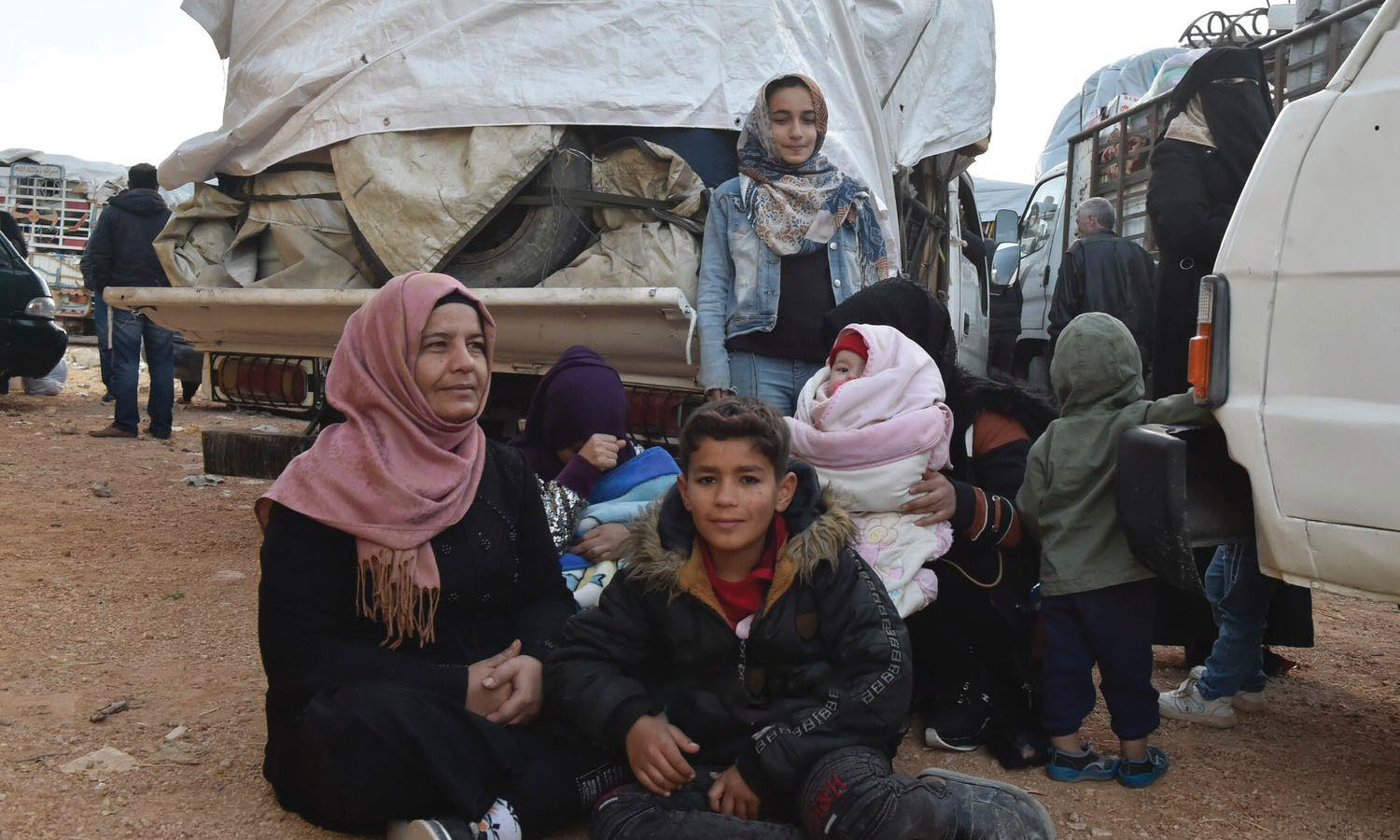
A Syrian refugee family in Lebanon prepares to return to Syria from Wadi Hmayyed, on the outskirts of the Lebanese border town of Arsal – 26 October 2022 (Annahar)
International law forbids, “killing machine” exists
Arbitrary arrest and torture, and various types of inappropriate treatment and violations are all fears that threaten the Syrian refugees upon their return from Lebanon, according to the Lebanese-French Access Center for Human Rights on 25 October.
The monitoring group also referred in a case study published on 25 October to the pressure on refugees to sign statements agreeing to “voluntary return,” in contravention of the principle of non-refoulment stipulated in Article No. 3 of the Convention against Torture, adopted by the United Nations in 1984, to which Lebanon is a party.
The Access Center pointed out the absence of any guarantees for the return of Syrians to their areas of origin and the lack of coordination to secure their needs to obtain civil documents to prove their real estate rights.
Article 14 of the Universal Declaration of Human Rights recognizes that every individual has the right to seek and enjoy asylum in another country to escape persecution.
Therefore, the Lebanese authorities do not have the right to push refugees to return to where they were “persecuted and abused,” according to lawyer Nabil Halabi.
The executive director at the Lebanese Institute for Democracy and Human Rights (LIFE) called for a distinction between a refugee to Lebanon for fear of his/her life after being displaced from Syria and an economic immigrant who is able to move between Lebanon and Syria.
Halabi explained that the economic immigrants and the Syrians who elected Bashar al-Assad in Lebanon cannot be classified as refugees.
|
The presence of the Syrian regime contrasts with the voluntary and safe return, and as long as this regime exists, refugees returning to Syria are vulnerable to abuse. Fadel Abdul Ghany, director of the Syrian Network for Human Rights (SNHR) |
Return “pressures” the Syrian regime, encounters “obstacles”
In light of the extreme poorness experienced by Syrian refugees in Lebanon, some of them are moving to regime-held areas that suffer economic and living deterioration, accompanied by unprecedented levels of inflation affecting their access to basic and food items, amid a government tendency to restructure “subsidy.”
It is not only the security or economic conditions that will constitute a concern for the returning refugees after more than ten years of absence from their cities, towns, and villages in different circumstances and on several levels.
At a time when about 68% of the residents of the areas controlled by the regime’s forces, and 48% of the residents of the areas that are originally under the regime’s control, want to emigrate outside Syria, the regime appears with the position of “desiring the return of refugees, and seeking to facilitate their arrival.”
This raises questions about the regime’s “actual” desire for the return of the refugees and the extent to which it is possible to guarantee their access to security and the services it promotes, given that those living primarily in its areas do not receive these services.
Refugees are “welcome” by the Syrian regime, why?
The official Syrian media waited near the border crossings hours before the return of the first batch of refugees, and the Health Ministry announced “the mobilization of its cadres” to conduct all the necessary medical examinations and provide health services to them in an attempt to portray the scene as a victory and a consolidation of the slogan “A safe Syria.”
Economic researcher Zaki Mahshi sees the regime’s media celebration, on several previous occasions, of “the return of refugees to their areas in which it defeated terrorism” as no more than a political and security card.
In addition to using the internally displaced to obtain more money in the name of “refugee return,” without real interest in whether the refugees get this money or not.
Mahshi told Enab Baladi that the regime implements what it benefits from, not what the people benefit from, and if the regime’s work provides a partial benefit to the people, this is in order to maintain its authority, and the purpose is not the interest of the people.
EU is “alert”
EU spokesman, Luis Miguel Bueno, told Enab Baladi on the issue of supporting Syrian refugees returning from Lebanon that the European Union focuses on supporting Syrians within different Syrian regions in cooperation with the UN and humanitarian organizations implementing these projects.
Bueno pointed to the possibility of increasing the volume of support, and this could happen in the upcoming months through the Brussels Conference on “Supporting the future of Syria and the region.”
Bueno’s statements came against the background of the proposal of the former Syrian ambassador to Lebanon, prior to his departure from his post, when he considered that the aid provided to the Syrians in Lebanon could be an encouragement and would give multiples of its strength if they obtained it inside Syria, according to the Lebanese National News Agency.
|
We have enough tools to make sure that the money reaches the projects that support the Syrians, and there are ongoing discussions with UN organizations and agencies to follow up on the implementation of the projects as needed. Luis Miguel Bueno, European Union Spokesperson |
In response to the EU’s potential concerns (as a donor party) about the regime benefiting from support, Bueno emphasized that the main partner of the EU in this framework is the UN and non-governmental organizations in Syria.
“We have enough tools to ensure that the funds reach the projects that support the Syrians, and there are ongoing discussions with UN organizations and agencies to follow up on the implementation of the projects as needed,” he added.
‘May not be implemented’
Affiliate professor at the European University Institute in Florence, Italy, Dr. Joseph Daher, confirmed that the Syrian refugees represent a political, social, and economic challenge to the Syrian regime.
The participant in the “Wartime and Post-Conflict in Syria” project added to Enab Baladi that the return of refugees has been a point of contention for many years between the Lebanese government and the regime, as the latter rejects their return, but does not mind the return of small or very “symbolic” numbers.
Lebanese politicians portrayed the Syrian refugees in Lebanon as the cause of economic problems and the suffering of the Lebanese citizens in recent years, despite Lebanon receiving a share of international and UN support as a country hosting refugees.
A case that Daher interpreted as a way to escape the real economic obligations of politicians, stressing that the economic reality in Lebanon is not related to refugees but rather to the country’s political economy.
The implementation of the Lebanese plan requires capabilities that the Lebanese state lacks, which indicates the possibility of summarizing the issue as a political campaign to blame refugees for the economic crisis, according to Daher.
“Abnormal” return, factors reinforce it
The severity of the economic and living crises in all of Syria has increased in recent years, especially in the regime-controlled areas, due to factors, the most important of which are unemployment, weak wages, the deterioration of the Syrian pound, and the weak purchasing power of people due to the unprecedented rise in prices.
All this caused the citizens’ inability to secure their most basic daily needs compared to previous years.
A study published by the Voices for Displaced Syrian Forum (VDSF) in November 2021 showed that 69% of the population residing in regime areas did not receive adequate and regular electricity or heating during 2021.
Also, 54% of them did not have regular and adequate access to healthy drinking water, 29% said they did not have regular access to health services, and 13% said they did not have regular access to education.
Economic researcher Zaki Mahshi told Enab Baladi that the current conditions of return are linked to several factors that impede a “normal” return of refugees.
One of the most prominent obstacles to return is the refugee himself, Mahshi added.
The Syrian refugee in Lebanon is completely convinced that the conditions are not conducive to his return to Syria, on the economic and living level, in light of the absence of job opportunities or sound infrastructure, the lack of basic goods and services, the deterioration of the value of the local currency and wages, and the government’s inability to provide subsidies, according to the economic researcher.
Mahshi said that there is a social factor represented in the refugee’s loss of the ability to communicate with the surrounding community that he left years ago, as he returns to it as a “stranger” who competes with its members for their work and livelihood that they hardly get, and this would create a social rift or increase the social rift currently there among some categories.
The return, from a security point of view of the governing institutions in Syria, constitutes a “state of terror” for the regime, as it will be forced to deal with the refugees according to its view of them as “dissident and out of its control,” in the absence of human or material capabilities of the regime to control all returnees.
Number of returnees is the “final say”
Dr. Daher believes that the economic impact of the return of refugees from Lebanon to Syria depends on the number of returnees, in addition to conditions that may differ from one region to another.
The participant in the “Wartime and Post-Conflict in Syria” project explained that in the event of the return of a “massive” number of refugees, this will increase pressures on economic sectors, especially housing rents, the labor market, and, to a lesser extent, the prices of basic commodities and materials linked to the cost of production.
For about ten months, the regime’s government has been following a policy of excluding citizens from government subsidies and gradually removing it from specific categories, which pushes them to buy basic items, such as bread, on the black market, at prices up to ten times its subsidized price.
According to the regime’s government statistics, about 600,000 families were excluded from subsidies last February, about 15% of the holders of subsidized goods cards (known as the smart card).
According to a study issued by The Malcolm H. Kerr Carnegie Middle East Center in March 2021, on how “Lebanon and Syria are using the fate of Syrian refugees to advance their economic and political agendas,” the deterioration of the economic situation in Lebanon was one of the important factors in addition to the Covid-19 pandemic which probably caused a decrease in the number of refugees wishing to “voluntarily” return to Syria.
if you think the article contain wrong information or you have additional details Send Correction
النسخة العربية من المقال
-
Follow us :












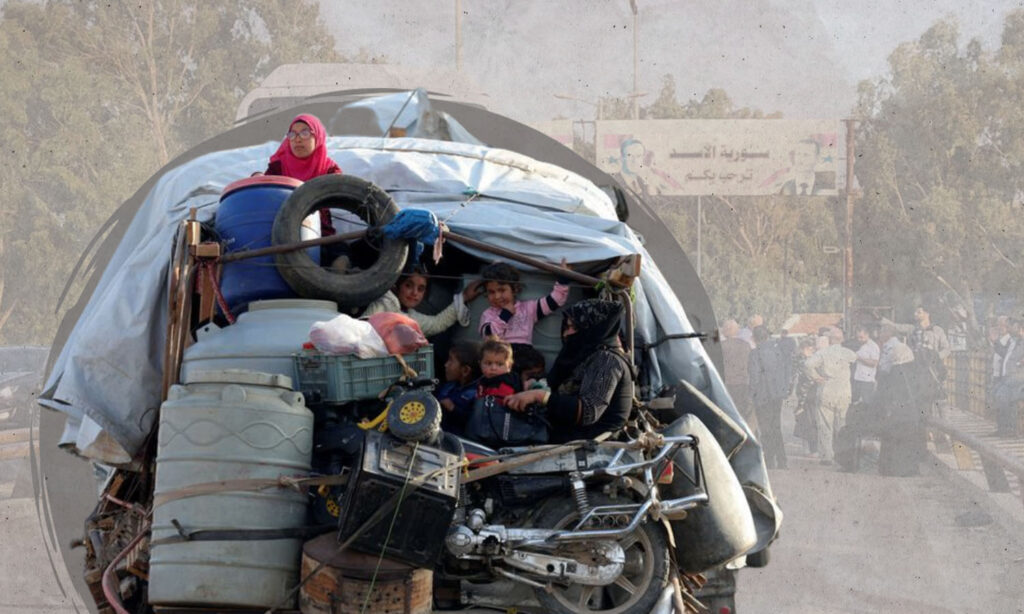
 Syrian refugees sit with their belongings on a pick-up truck as they prepare to return to Syria from Wadi Hmayyed, on the outskirts of the Lebanese border town of Arsal - 26 October 2022 (Reuters)
Syrian refugees sit with their belongings on a pick-up truck as they prepare to return to Syria from Wadi Hmayyed, on the outskirts of the Lebanese border town of Arsal - 26 October 2022 (Reuters)





 A
A
A
A
A
A

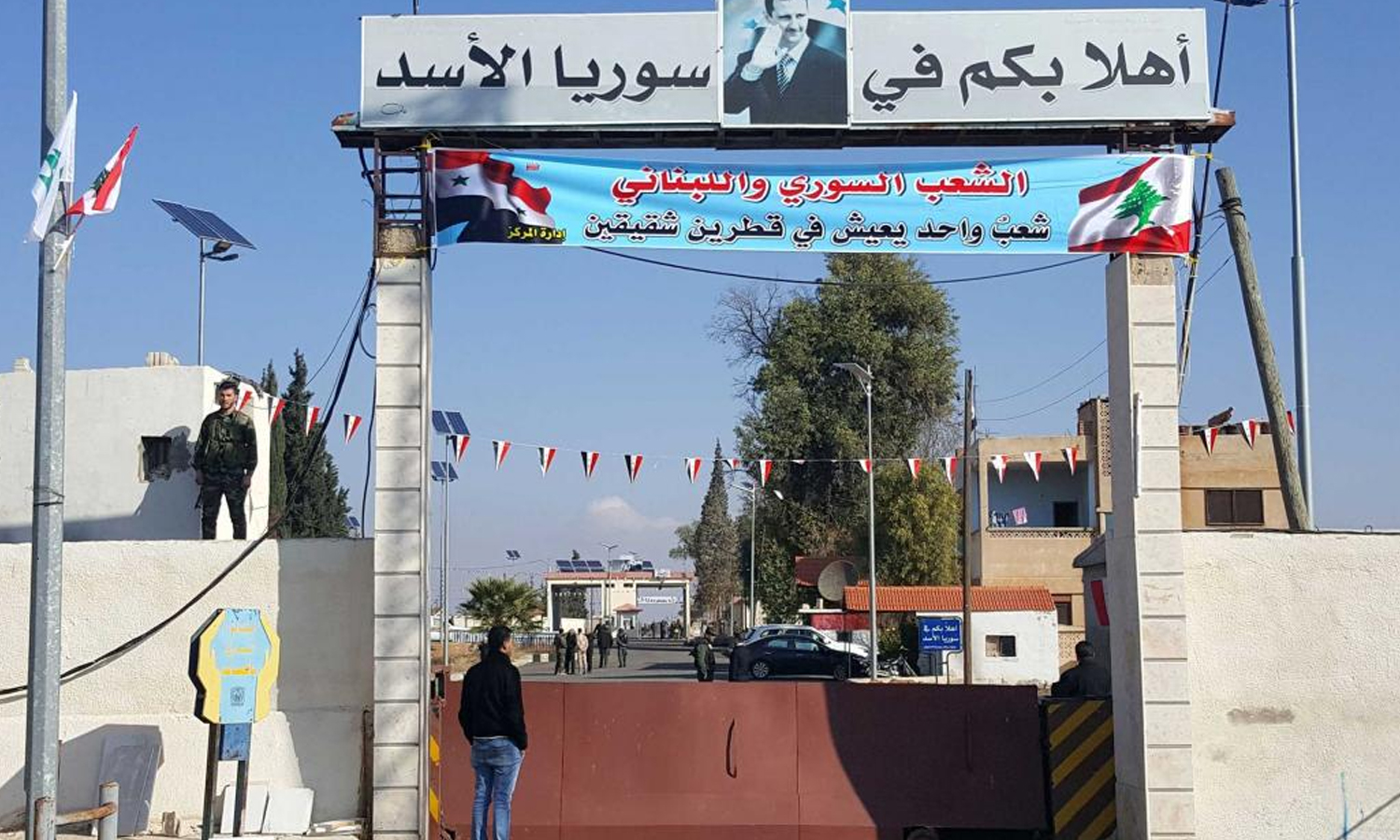






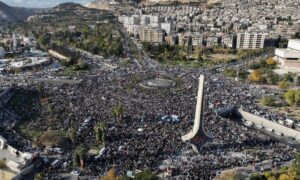
 More In-Depth
More In-Depth